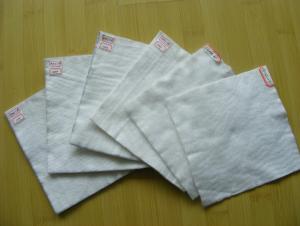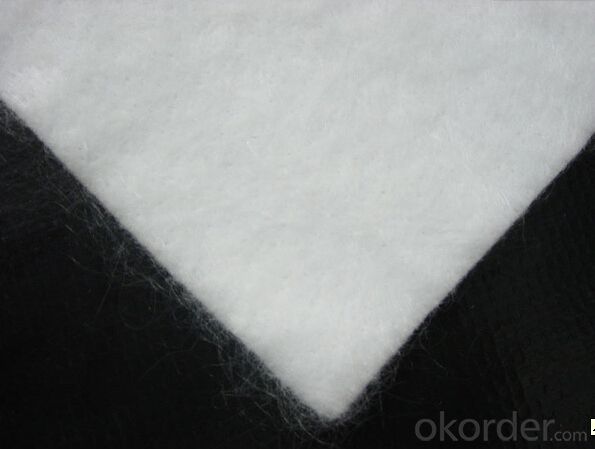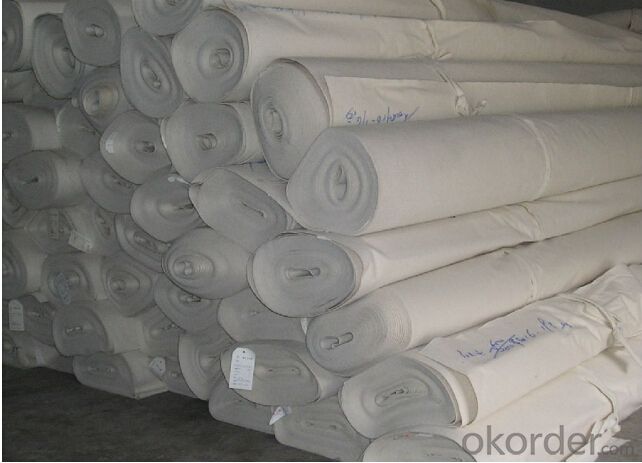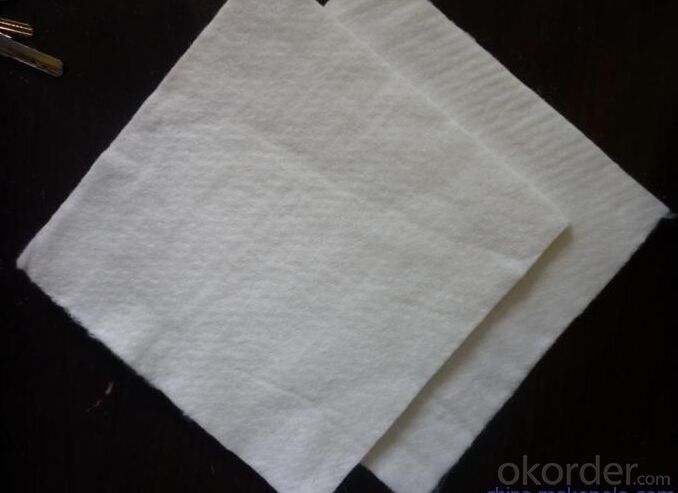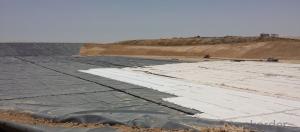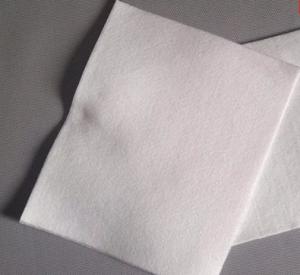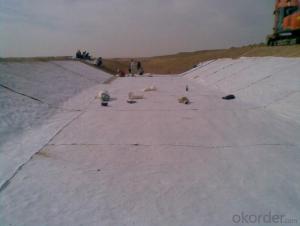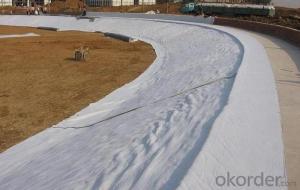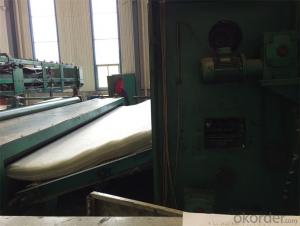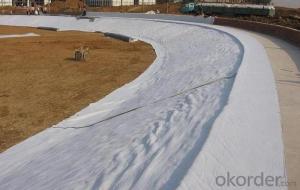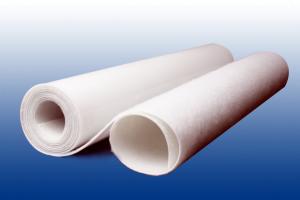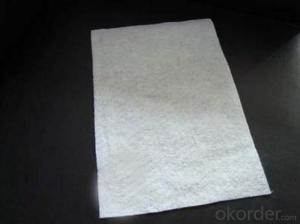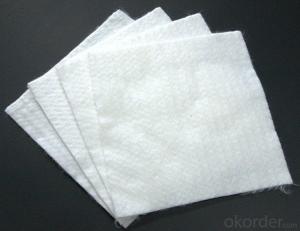Inbitex Geotextile - PP/PET Short Fiber Needle Punched Nonwoven Geotextile with Very Competitive Price and Good Quality
- Loading Port:
- Qingdao
- Payment Terms:
- TT or LC
- Min Order Qty:
- 5000 m²
- Supply Capability:
- 120000 m²/month
OKorder Service Pledge
OKorder Financial Service
You Might Also Like
PP/PET Short Fiber Needle Punched Nonwoven Geotextile with 100g-1500g
1.Specifications of PP/PET Short Fiber Needle Punched Nonwoven Geotextile with 100g-1500g
Weight / Mass: 100g/m2-1500g/m2 .
Width: Within 8 m (1m-8m as request ).
Length: 50-200m/roll (as request).
Material: PP / PET .
Color: Black , white , grey , as your request.
Certificate: CE/ISO9001/ISO14001
Manufacturing method: nonwoven
2.Features of PP/PET Short Fiber Needle Punched Nonwoven Geotextile with 100g-1500g
Good flexibility
Permeability
Filtration
Separation and easy for construction
3.Application of PP/PET Short Fiber Needle Punched Nonwoven Geotextile with 100g-1500g
Highway
Railway
Dam
Reclamation for filtration
Separation drainage and protection
4.Technical Data of PP/PET Short Fiber Needle Punched Nonwoven Geotextile with 100g-1500g
Item | Specification | |||||||||||||||||||||||||
Weight | 100 | 150 | 200 | 250 | 300 | 350 | 400 | 450 | 500 | 600 | 800 | |||||||||||||||
Weight variation,% | -8 | -8 | -8 | -8 | -7 | -7 | -7 | -7 | -6 | -6 | -6 | |||||||||||||||
Thickness(mm≥) | 0.9 | 1.3 | 1.7 | 2.1 | 2.4 | 2.7 | 3.0 | 3.3 | 3.6 | 4.1 | 5.0 | |||||||||||||||
Width variation,% | -0.5 | |||||||||||||||||||||||||
Break strength ,KN/m≥ | 2.5 | 4.5 | 6.5 | 8.0 | 9.5 | 11.0 | 12.5 | 14.0 | 16.0 | 19.0 | 25.0 | |||||||||||||||
Elongation at break,% | 25-100 | |||||||||||||||||||||||||
CBR Mullen Burst Strength | 0.3 | 0.6 | 0.9 | 1.2 | 1.5 | 1.8 | 2.1 | 2.4 | 2.7 | 3.2 | 4.0 | |||||||||||||||
Sieve size O90(O95),mm | 0.07-0.2 | |||||||||||||||||||||||||
Vertical Permeability Coefficient cm/s | K×(10-1-10-3) | |||||||||||||||||||||||||
Tear strength,KN≥ | 0.08 | 0.12 | 0.16 | 0.2 | 0.24 | 0.28 | 0.33 | 0.38 | 0.42 | 0.46 | 0.6 | |||||||||||||||
5.Some Photos of PP/PET Short Fiber Needle Punched Nonwoven Geotextile with 100g-1500g
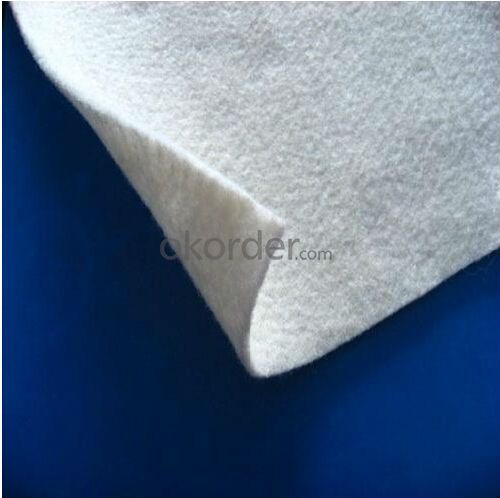
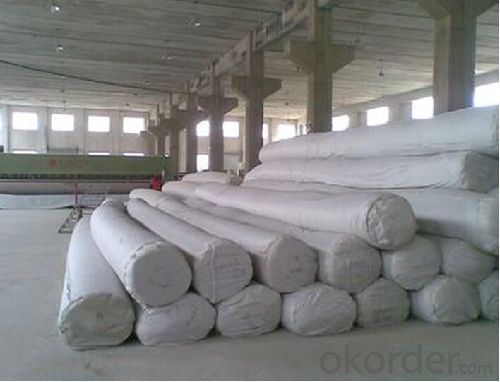
- Q: 200g geotextile how much money a square
- Geotextile laying - including the labor costs (according to geotextile specifications and laying conditions and requirements are different), material costs (specific quality requirements and thickness, are not the same ..), mechanical use costs (such as transport, sewing System, hoisting, etc.). The price is different. Sometimes the construction of our geotextile laying, the price per square meter from 9 yuan to 50 yuan range.
- Q: What are the different geotextile manufacturing processes?
- There are several different geotextile manufacturing processes, including weaving, knitting, and nonwoven methods. Weaving involves interlacing yarns in a crisscross pattern, creating a strong and durable material. Knitting involves interlocking loops of yarn, resulting in a flexible and stretchable fabric. Nonwoven processes involve bonding fibers together using heat, chemicals, or mechanical methods, producing a lightweight and permeable textile. Each manufacturing process has its own advantages and is used for different applications depending on the desired characteristics of the geotextile.
- Q: Can geotextiles be used in the protection of shoreline structures?
- Yes, geotextiles can be used in the protection of shoreline structures. Geotextiles are permeable fabrics that can be placed to prevent erosion and stabilize the shoreline. They can be used as a barrier between the soil and water to prevent soil loss and maintain the integrity of shoreline structures.
- Q: What are the materials used for spinning geotextiles?
- Spinning is made of synthetic fibers through acupuncture or weaving made of permeable geosynthetics. There are at least two sets of parallel yarns (or flat yarn), a group of looms along the loom (the direction of fabric travel) called warp yarns, another group The horizontal arrangement is called weft yarn.With the different weaving equipment and the process, the warp and the weft are woven together into a cloth, and can be knitted into different thickness and density according to different use range. Generally, the spinning and weaving cloth is thin and vertical Have a very strong tensile strength (longitude than latitude), with good stability. There are spinning geotextile according to the weaving process and the use of latitude and longitude is divided into reinforced geotextile and non-reinforced geotextile two categories, plus The tensile strength of the geotextile is much larger than that of the ordinary geotextile, and the general application of the geotextile is reinforced with the reinforcement of the geotextile project. The main function is reinforced by reinforcement and has the function of plane isolation and protection. Can be selected according to the specific purpose of use.
- Q: Can geotextiles be used for erosion control in river levees?
- Yes, geotextiles can be used for erosion control in river levees. They are commonly used as a protective barrier to prevent soil erosion and stabilize the levee slopes. Geotextiles can effectively control erosion by providing reinforcement and filtration, reducing water velocity and sediment movement, and promoting vegetation growth.
- Q: What are the different geotextile installation techniques in filtration?
- There are several different geotextile installation techniques used in filtration, including direct placement, trench installation, and slope installation. Direct placement involves spreading the geotextile directly on the ground and securing it with stakes or sandbags. Trench installation involves placing the geotextile in a trench and backfilling it with soil. Slope installation is used on steep slopes and involves anchoring the geotextile with staples or other fasteners. These techniques help ensure proper filtration and erosion control in various applications.
- Q: Geotextile exports Nordic need certification
- Production standards geotextile, geomembrane, composite geomembrane.
- Q: How do geotextiles help with subgrade stabilization in road construction?
- Geotextiles help with subgrade stabilization in road construction by acting as a barrier, separating the subgrade soil from the overlying base and pavement layers. This prevents the mixing and contamination of different soil layers, enhancing the overall stability and strength of the road. Additionally, geotextiles improve drainage by allowing water to pass through, reducing the risk of water accumulation and subgrade saturation, which can lead to softening and failure of the road.
- Q: What are the physical properties of geotextiles?
- Geotextiles are synthetic materials that possess various physical properties. These properties include high tensile strength, which allows them to withstand heavy loads, excellent flexibility, which enables them to conform to uneven surfaces, and resistance to biological degradation, ensuring their long-term durability. Geotextiles also exhibit good permeability, allowing water to pass through while retaining soil particles, and have high resistance to UV radiation, enabling them to withstand exposure to sunlight. Additionally, they are lightweight, easily transportable, and easy to handle and install, making them a popular choice in various civil engineering and construction applications.
- Q: Can geotextiles be used in geosynthetic clay liner caps?
- Yes, geotextiles can be used in geosynthetic clay liner caps. Geotextiles are often used as a protective layer over geosynthetic clay liners to prevent soil intrusion, enhance filtration, and provide additional stability to the liner system.
1. Manufacturer Overview
| Location | 示范:Hebei, China |
| Year Established | 示范:1997 |
| Annual Output Value | 示范:Above US$50 Million |
| Main Markets | 30.00% South America; 20.00% North America; 15.00% Eastern Europe; 15.00% Southeast Asia; 10.00% South Asia; 5.00% Southern Europe; 5.00% Africa |
| Company Certifications | ISO 9001:2008 |
2. Manufacturer Certificates
| a) Certification Name | |
| Range | |
| Reference | |
| Validity Period |
3. Manufacturer Capability
| a) Trade Capacity | |
| Nearest Port | Tianjin;Qingdao;Shanghai |
| Export Percentage | |
| No.of Employees in Trade Department | 21-50 People |
| Language Spoken: | English;Chinese |
| b) Factory Information | |
| Factory Size: | Above 100,000 square meters |
| No. of Production Lines | Above 12 |
| Contract Manufacturing | OEM Service Offered;Design Service Offered |
| Product Price Range | High;Average |
Send your message to us
Inbitex Geotextile - PP/PET Short Fiber Needle Punched Nonwoven Geotextile with Very Competitive Price and Good Quality
- Loading Port:
- Qingdao
- Payment Terms:
- TT or LC
- Min Order Qty:
- 5000 m²
- Supply Capability:
- 120000 m²/month
OKorder Service Pledge
OKorder Financial Service
Similar products
Hot products
Hot Searches
Related keywords
